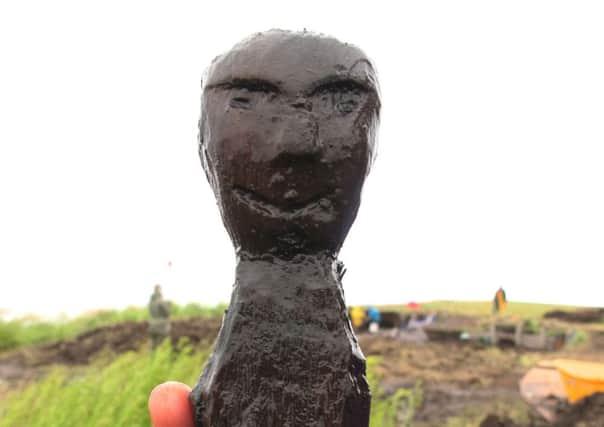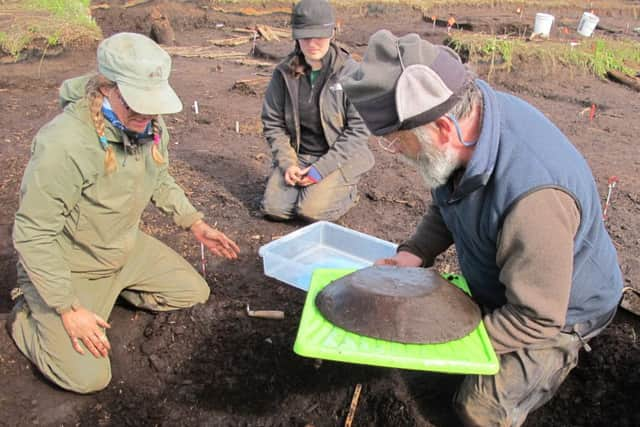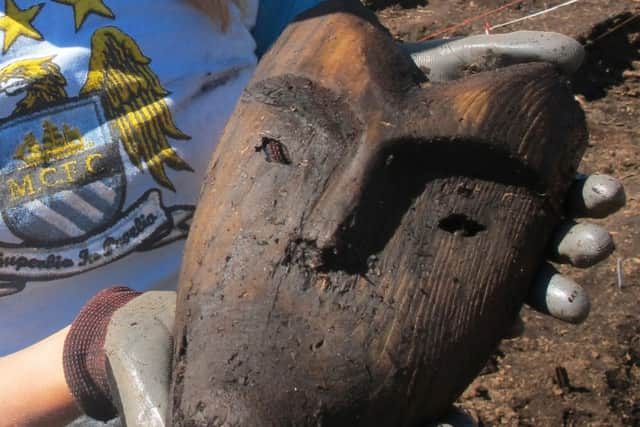Scots university to save ‘melting’ Alaskan village


Archaeologists from Aberdeen University have been battling since 2009 to help preserve the precious artefacts contained at the site of a 700 year-old Eskimo village in Western Alaska which is now in danger of being washed into the sea.
They were first called in five years ago to carry out a rescue dig after the frozen coastline began to be washed away as a result of global warming.
Advertisement
Hide AdAdvertisement
Hide AdThe dig is revealing never seen before artefacts as well as providing clues to how past societies in the remote area dealt with climate change and how global warming could affect mankind in the future.


A university spokesman explained: “Residents of the Yup’ik Eskimo village of Quinhagak first called in archaeologists from the university of Aberdeen in 2009 to carry out a rescue dig after observing their coastline being washed away.
“Within hours of beginning, the team, working alongside local archaeologists, located a 700-year-old village site which was falling into the sea. Amongst the site were hundreds of immaculate artefacts which had been preserved by the permafrost, but were now exposed to the elements because of the thaw.”
The team has now been awarded a grant of £1.1m grant from the Arts and Humanities Research Council to finance the vital dig for another four years, but also fund local archaeological education and training initiatives as well as a regional survey to find more sites which could also be under threat.
Dr Rick Knecht, the project leader, said: “The exposed archaeological site was rapidly eroding away because of global warming – you’ve got rising sea level, and the permafrost is melting. The soil is held together by the ice, so when the ice melts the soil becomes very vulnerable to marine erosion.“


He recalled: “The first thing we found was a complete wooden doll with the original paint still on it. It’s quite incredible – leather, fur, plants, even 400-year-old grass that has been completely preserved intact because they’ve been frozen all this time.
“Instead of looking at stones and bones, like archaeologists usually look at, we’ve got wooden artefacts - pieces of organic material.”
He added: “Since we started in 2009, the shoreline has retreated a full ten metres. This is happening all around the Arctic and because these were coastal people, the archaeological record is lost with it. But it’s not just an archaeological record – it’s one of the clearest records of the past that we know of anywhere in the north.
Advertisement
Hide AdAdvertisement
Hide AdThe site has been named “Nunalleq” - meaning “the old village” elders of the present day Yup’ik Eskimo village of Quinhagak.
Discoveries
Discoveries at the site already number tens of thousands and have included samples of human hair, ceremonial face masks and an ivory carving of a legendary river monster.The artefacts have been transported to the University of Aberdeen for preservation and archiving but remain the property of the people of Quinhagak and will be returned afterwards
Said Dr Knecht: “The Yup’ik didn’t come into contact with modern society until the 1820s. The area they live in, an area nearly three times the size of Scotland, remains one of the great unknown regions in North America, in terms of archaeology.
“This is our first look at pre-contact Yup’ik life. It’s been a complete revelation to both scientists and the local native community. The discovery of these artefacts is helping to reintroduce lost skills back into these communities – the skills used to make them may have been lost and are being re-learned. We literally have pieces being recreated within days of being discovered.”
The “lost village” is believed to have been inhabited between 1300 and 1650, during the “Little Ice Age” which was a period of rapid global climate change.
Said Dr Knecht: “It’s ironic that climate change is bringing about this thaw, which in itself is helping us answer questions about how these people coped with climate change hundreds of years ago and may help us plan for similar conditions in the future.
“The site is a little time capsule that we can tap into, to infer changes that may happen in the future – with regards to the availability of different animal species, as climate shifts changes in animal behaviour, and how past humans responded to those changes.“We’ve never had such a rich database to work with before. We have plant remains, insects, bones and human hair that can be analysed to tell us how local conditions were changing, how these people were living in the past, how their lives changed over the span of the Little Ice Age.”